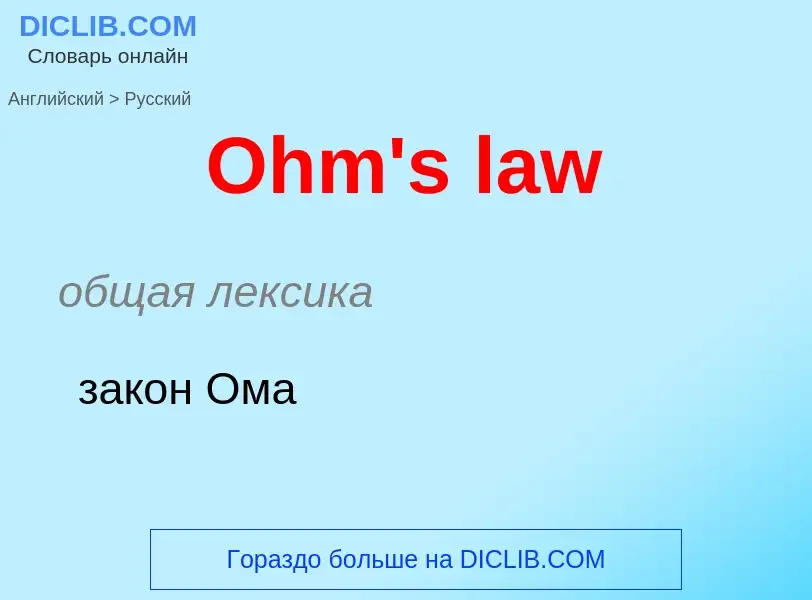Tradução e análise de palavras por inteligência artificial ChatGPT
Nesta página você pode obter uma análise detalhada de uma palavra ou frase, produzida usando a melhor tecnologia de inteligência artificial até o momento:
- como a palavra é usada
- frequência de uso
- é usado com mais frequência na fala oral ou escrita
- opções de tradução de palavras
- exemplos de uso (várias frases com tradução)
- etimologia
Ohm's law - tradução para russo
общая лексика
закон Ома
общая лексика
бизнес-правила
предложения SQL и операторы, настраивающие значения одной или более колонок в базе данных на специфические правила деятельности организации [пользователя]. Так, если в колонке "Зарплата" может быть значение от 0 до 10 000 долл., то бизнес-правило может ограничить верхнее значение в соответствии с классификатором штатного расписания
Definição
Wikipédia
Ohm's law states that the current through a conductor between two points is directly proportional to the voltage across the two points. Introducing the constant of proportionality, the resistance, one arrives at the usual mathematical equation that describes this relationship:
where I is the current through the conductor, V is the voltage measured across the conductor and R is the resistance of the conductor. More specifically, Ohm's law states that the R in this relation is constant, independent of the current. If the resistance is not constant, the previous equation cannot be called Ohm's law, but it can still be used as a definition of static/DC resistance. Ohm's law is an empirical relation which accurately describes the conductivity of the vast majority of electrically conductive materials over many orders of magnitude of current. However some materials do not obey Ohm's law; these are called non-ohmic.
The law was named after the German physicist Georg Ohm, who, in a treatise published in 1827, described measurements of applied voltage and current through simple electrical circuits containing various lengths of wire. Ohm explained his experimental results by a slightly more complex equation than the modern form above (see § History below).
In physics, the term Ohm's law is also used to refer to various generalizations of the law; for example the vector form of the law used in electromagnetics and material science:
where J is the current density at a given location in a resistive material, E is the electric field at that location, and σ (sigma) is a material-dependent parameter called the conductivity. This reformulation of Ohm's law is due to Gustav Kirchhoff.




!["Jack and the Giant Joint-Stock", a cartoon in ''Town Talk'' (1858) satirizing the 'monster' joint-stock economy that came into being after the [[Joint Stock Companies Act 1844]] "Jack and the Giant Joint-Stock", a cartoon in ''Town Talk'' (1858) satirizing the 'monster' joint-stock economy that came into being after the [[Joint Stock Companies Act 1844]]](https://commons.wikimedia.org/wiki/Special:FilePath/Jack and the Giant Joint-Stock.jpg?width=200)
